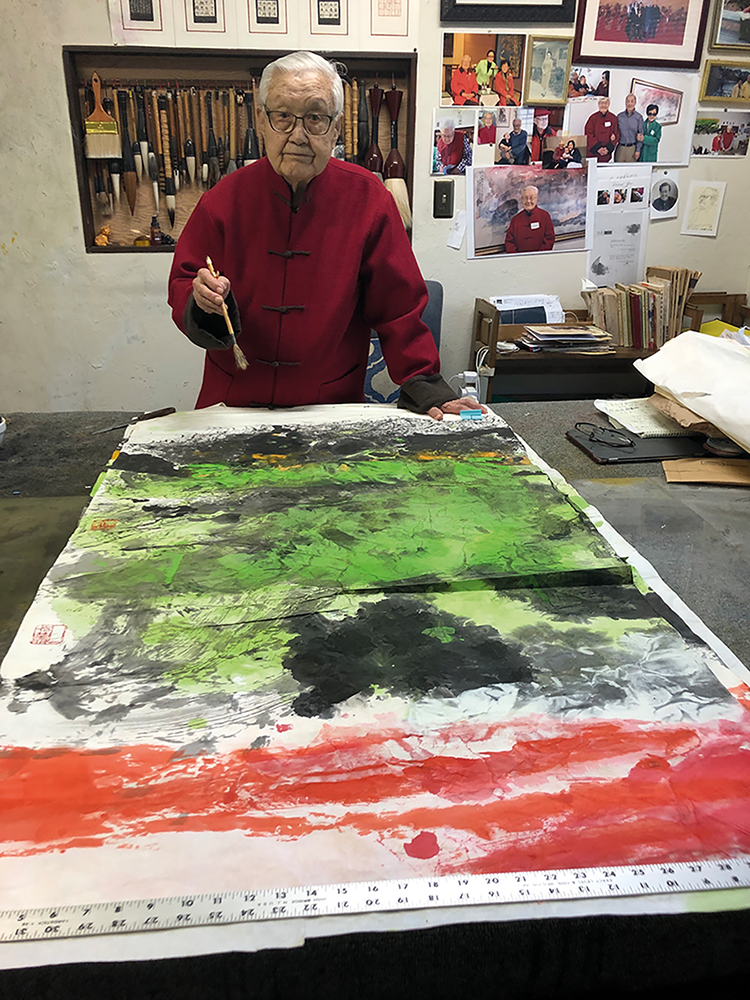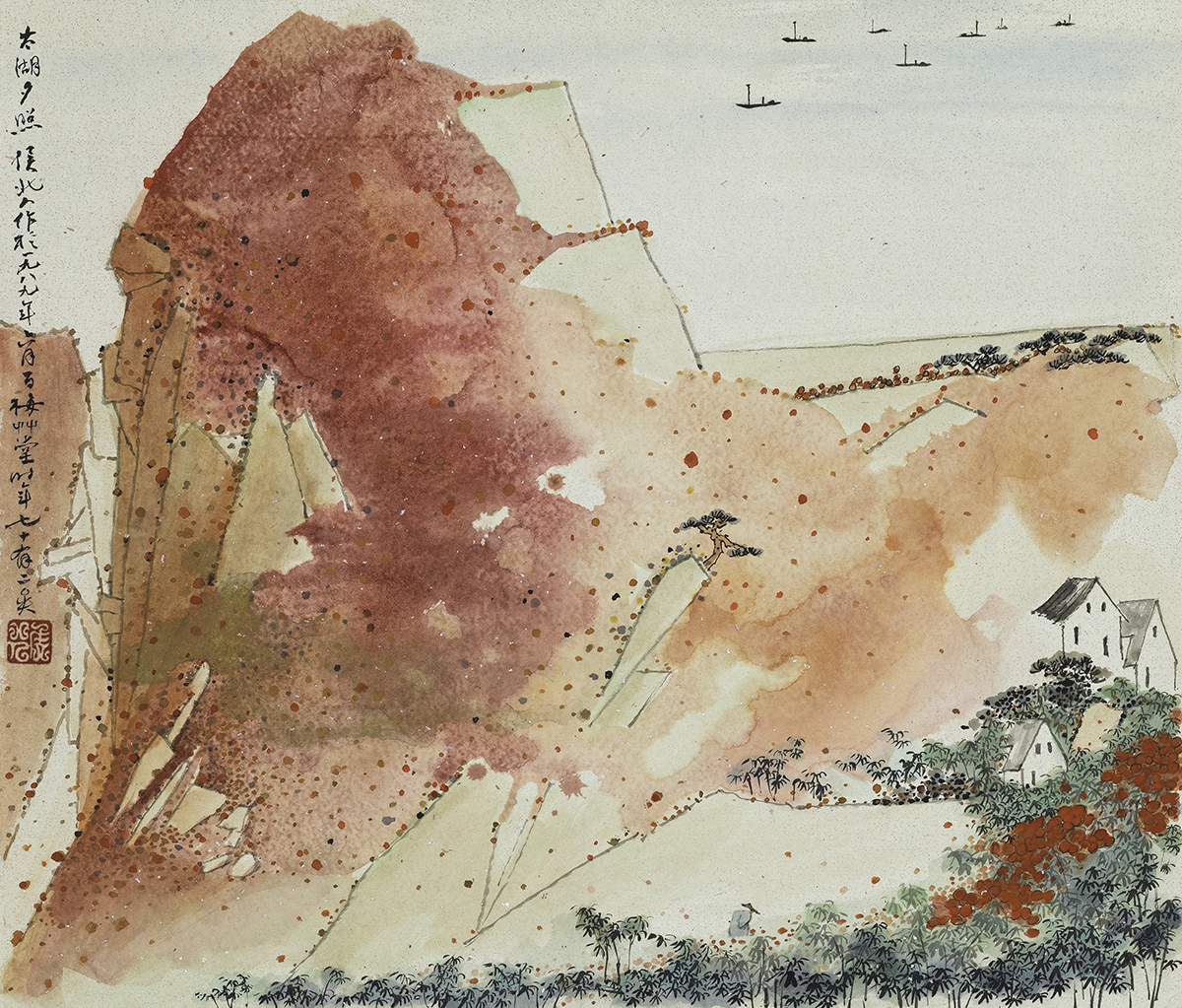1. Introduction
In the early twentieth century, Chinese ink painting came to be termed ‘national painting’ (guohua) or Chinese painting (zhongguo hua) to distinguish it from Western forms (xihua), and to describe the ink painting tradition inherited from imperial China with its long-defined styles and subject matters of figures, landscapes and flower-and-bird motifs. Debate around the role and nature of China’s guohua painting grew in response to the perceived challenge of Western art. One of the particular fascinations of ink painting is that it is not a unified inheritance, but rather a multiplicity of practises and methods, lineages and schools, idioms and styles.
Toward the end of the twentieth and into the twenty-first century, ink painting has continued to develop and react in response to the globalisation and hybridisation of contemporary Chinese art. New terms and classifications have been applied to ink painting including ‘ink art’ (shuimo yishu) and ‘experimental ink painting’ (shiyan shuimo) to describe the use of traditional materials in combination with the conceptual, postmodern, abstract and multi-media artmaking forms and strategies of Western and global contemporary art that are no longer adequately defined or described by guohua categories. The still evolving boundaries of ink painting have expanded remarkably and innovatively into areas that can challenge simple or inherited definitions, though ink painting has yet to fully supersede and shake off the earlier category of guohua and its part in the dichotomy of Chinese and Western.
The issues and complexities of artistic classification, as well as of cultural identity, have been compounded by transnational Chinese artists living outside China who are able to choose from an open-ended range of cultural references, media and materials, and also find themselves negotiating multi-faceted and overlapping expressions of Chinese and globalised artistic identities in which any established definition of what constitutes Chinese painting has been radically expanded, posing significant challenges for both artists and audiences.1 On the other hand, it has been observed that a “substantial portion of art production today in China, Hong Kong, Taiwan, and overseas is not ‘new’ but ‘traditional’” and that “it both perpetuates and aims gradually, gently, to modernize.” 2

